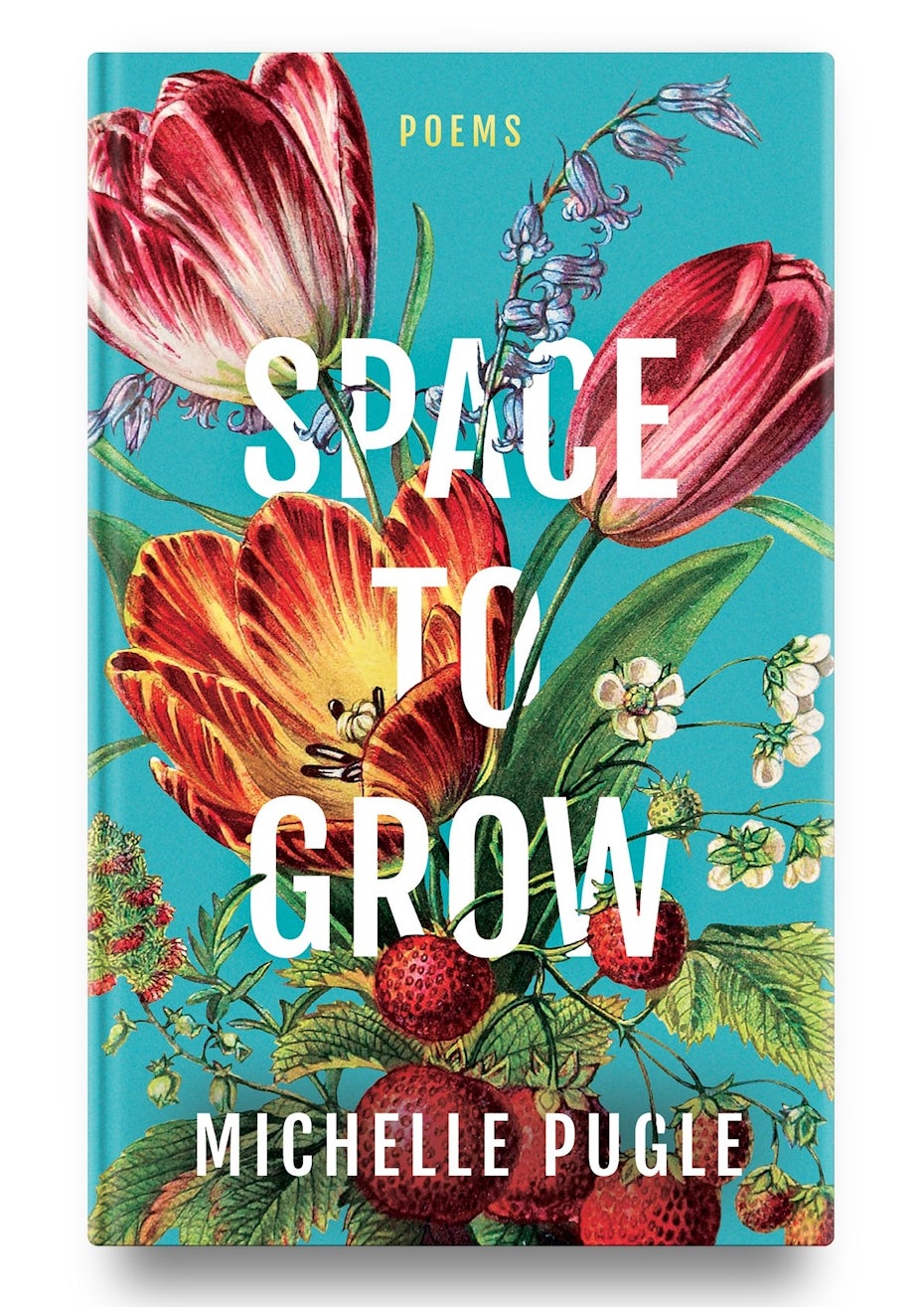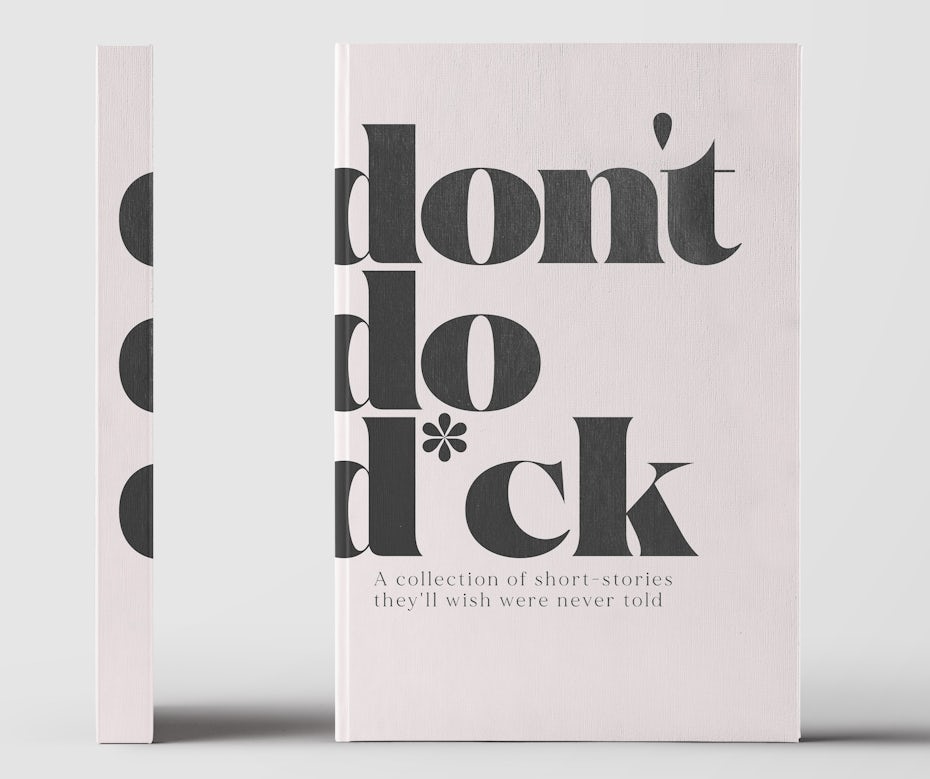In this step-by-step guide, we’ll take you on a creative journey through How to Design Book Cover in 2023. We’ll explore the latest trends, techniques, and expert tips that will help you create a cover that not only captures the essence of your story but also entices readers to pick up your book.
Whether you’re a design novice or a seasoned artist, this guide will provide you with all the essential knowledge and practical steps to bring your vision to life. We’ll cover everything from conceptualizing ideas and selecting typography to choosing color schemes and incorporating eye-catching visuals. By the end, you’ll have the tools and confidence to design a book cover that leaves a lasting impression.
So, grab a notebook, sharpen your pencils, and let’s embark on this exciting journey of book cover design together. Get ready to unleash your creativity and set your book apart in the ever-evolving world of literature. Let’s dive in!
How to Design Book Cover in 2023
Making a book design, just like any other creative work, starts with an idea. You don’t have to be a professional designer to have a good idea and to make a good book cover, but you also shouldn’t wait endless months for inspiration to hit you out of nowhere.
You don’t even have to be a designer to make the design yourself, but more on that later.
1. Do research to get design ideas
This is not to contest the fact that we tend to get the best ideas when we least expect them, but waiting for the proverbial muse to kiss you on the forehead may take a bit longer than your publisher is comfortable with.
Or in the worst case, your waiting may be altogether in vain. Our suggestion: give that muse a little nudge and a suggestive wink.
Just go online and see what others have been up to. You don’t have to feel bad about it, it’s just market research. Check out some of the more popular volumes in your genre to get a feel for the overall direction, but don’t get too bogged down with anything.
Discover the works of lesser-known authors, and keep an open mind towards discovering foreign works too.
Amazon Books and Barnes & Noble are great places to start, but Alibris, Book Depository, and many overseas stores such as Booktopia or Waterstones also have enormous, categorized offerings that you can browse.
2. Start work on your own design concept
This part is all about crystallizing the ideas you’ve gathered into something more tangible. This can be challenging, but not if you have some guidelines to follow. Let’s break it down into baby steps to make it easier.
Here are some essential things to keep in mind when working on your drafts for designing book covers:
That is if there’s an established brand to build on. If the book is part of a series, or the author’s previous books already have an established visual identity, it could limit your artistic freedom to some degree. But it can also help you narrow down your focus. With a debut, there’s much more bandwidth for experimenting. In this case, it’s worth sketching up several very different styles. Although not radically different, and that’s where the next point comes into play.
If you’re the author, this shouldn’t take too much effort, but if you’re designing a book cover for someone else’s work, it’s crucial to understand not only the genre, but also some of the main ideas, symbols, and the overall vibe to know what belongs on the cover and what doesn’t. This will help you decide on the color palette as well as the centerpiece, perhaps even the typography.
In other words, read the book or, at the very least, have the author or the publisher send you a detailed brief if the schedule is too tight.
- Make sure it will look good from afar
There’s a difference between designing a printed book jacket and creating an eBook cover. According to a 2017 NPD BookScan report, about one in five books sold today is an eBook, and hardcovers are being sold online in increasing numbers as well.
What this means is that a big part, if not most of the audience, will likely have their first contact with the new book’s cover on a computer or phone screen, in the form of a tiny thumbnail. With e-ink displays like the ones on Kindle devices becoming common in eBook readers, it also doesn’t hurt if the design works well in black and white.
3. Prepare your draft
- Lay out the key information
What do you want the cover to include? It’s quite easy to overcrowd the front cover with too much information, but there are some key elements you must incorporate in your design.
Mandatory layout elements:
- Title. This goes without saying because it’s almost always the main focal point of the design.
- Author. Regardless if it’s one person’s brainchild or the result of teamwork, the author has to be on the front cover, or at the very least, on the spine of the book.
- Background. This may be an intricate design, a stylish frame, or just a simple color, but regardless of the approach, the background is an essential element of any book cover design.
Optional layout elements:
Depending on your concept, you may add some secondary text elements to your book cover design. As a rule of thumb, the more detailed your background, the less likely it is you can still include these without compromising the design:
- Subtitle
- A brief review or quote
- Publishing details
As you can see in the example below, the book cover has two subtitles and a quote about the book from Stephen King.
The text you put on the book cover may be the work of a genius, but the wrong typography is a sure way to mediocrity for those brilliant thoughts. A well-chosen typeface can give the text almost as much character as the words themselves. But that’s the last thing on your checklist when choosing your font.
The most important aspect of book cover typography is readability. We can’t stress this enough.
If someone who sees the book for the first time can’t read all the text on the cover at a glance, move on to a different typeface without hesitation. Zoom out or take a few steps back before you fall in love with one to make sure it reads well in thumbnail size too.
Once you have a shortlist of just three or four typefaces, you can play around with font weights, glyphs, swashes, letter spacing, line height, and other fancy stuff that’s way down the rabbit hole. Check out our collection of free typography fonts that may fit your book cover project, or take a look at some free script fonts if you’re after something that resembles handwriting.
Here’s a good example where the typography and the color goes hand in hand with the book’s topic.

- Choose an appropriate color palette
This topic is so complex it could fill not just yet another book, but perhaps a small library. Then again, you don’t need an arts degree to get the basics right.
The most important thing is to stay away from using too many different colors and make conscious choices when selecting those few tones to make sure they match. You can check out some proven color combinations to get inspired.
The color palette for The Martian goes hand in hand perfectly with the book’s theme since it resembles the planet Mars.

The background, as previously mentioned, is a critical design element, regardless of how simple or complex it is. You have many options, but in most cases, it’s best to go with a clean visual that doesn’t steal the focus from the title.
This is not to say you shouldn’t use photos. On the contrary, high-contrast shots are especially impactful, but keep in mind that the busier the background, the more challenging it is to keep the overall design nicely balanced. Far from impossible, though.
If you choose to use a photo, make sure it’s high-resolution, high-quality, and last but not least, you have the right to use it. A copyright lawyer’s name is the last thing you want to see in your fan mail.
When browsing for an image to make a book cover design, ensure it evokes the right mood and causes an emotional reaction, be it calmness, suspense, intrigue, or even fear or disgust as long as it fits the theme.
An alternative would be to go for a minimalist book cover and keep the visual elements at a minimum.
Just by looking at the book cover below, you know that something’s about to go down in that book.

- Look into the size requirements
Depending on where the book will be marketed, you may need several versions of different resolutions and aspect ratios. It might be a good idea to check that your design concept works in all scenarios, and create the master file in a way that it will be painless to adapt it to a new format later.
Here are some of the most popular online stores where you might want to list your book, as well as their book cover size requirements.
| Platform | Format | Cover size requirements | Recommended size |
| Amazon Kindle Direct Publishing | JPG, TIFF | 1000 px min. width (up to 10000 px) | 1600 x 2560 px |
| Barnes & Noble | JPG, PNG | 750 px min. width | 1400 px min. width |
| Apple iBooks | JPG, PNG | 1400 px min. width | 1400 x 1873 px or 1600 x 2400 px |
| Draft 2 Digital | JPG | 1600 x 2400 px | 1600 x 2400 px |
| Kobo Books | JPG, PNG | 1400 px min. width | 1600 x 2400 px |
| Wattpad | JPG, PNG | 512 x 800 px | 512 x 800 px |
| Smashwords | JPG, PNG | 1600 x 2400 px | 1600 x 2400 px |
What a Book Cover Should Do
Before jumping into the technical bits and bolts of how to make book covers, it’s worth looking into the why.
For the sake of relatability, think of the book as a room. If the contents of the book are all that’s inside the room, the cover is the door. It should serve as a gateway between the reader and the book, a two-way channel that on one hand allows the author to address the reader but also gives the reader a peek into the book before opening it.
But for this to work, said door must be inviting and easy to open.
The best book covers give something away to capture attention and raise curiosity. So while a touch of mystery doesn’t hurt, the book cover design shouldn’t leave a few basic questions unanswered:
1. What’s the book’s genre?
This is crucial for marketability because you have to find an appropriate niche for your book, and you want it to fit into it well. From a less technical point of view, basic common sense also dictates to avoid disappointment.
For example, a high-action snapshot may look compelling. Still, if the book is a volume of transcendent contemplations or intricate macramé knots, you’re in for some bad reviews on Amazon. The bottom line is, dissonance is terrible for business.
You can see in the example below how the book cover conveys pretty clear the genre of the book—thriller, crime, mystery.

2. Is it unique?
Every book is unique, of course, but so are snowflakes, and you know that without having looked at too many of them. A clever and creative book cover design should aim to highlight not only that yours really is different from the rest, but also hint at why it’s worth a closer look. Without spoilers, of course.
Below, you can see one of my favorite examples of unique book covers that I’ve stumbled upon.
3. What’s the story?
Again, we know you don’t want to give away too much, but you don’t have to. Think of this more as a handhold. If the previous two questions were too difficult to answer in one visual unit, this could be the skeleton to guide your design work, and a reference point for the viewers to better understand what reading experience they should be expecting.
In the example below, you can see how the book cover depicts the story of a man who is sentenced to spend the rest of his life in a luxury hotel.
The 7 most inspiring book cover trends of 2023
1. Abstract blends
How do you produce a striking cover that’s great for social media traction, but also keeps a sense of mystery? For many authors and designers, abstract blended covers are the answer. These bright, dynamic designs mix color and texture, suggesting randomness and creativity, and rejecting neatness, order and realism. Given many people have experienced much change in their lives or are exhausted from the global upheavals in the last few years, it’s unsurprising to see authors and designers breaking the mold when it comes to book cover design.

Though there are many vibrant patterns swirling on these book covers, this trend isn’t totally abstract. Figures often emerge from the swirl that suggests personal transformation, or a way we build pictures in our minds as we read. But, unlike covers with photographic or photorealist front covers, these books rarely feature an identifiable face, making them particularly suitable for books with multiple interpretations, or those (like self-help titles) where readers may see themselves as the main character
2. Big typography, busy backgrounds
It’s hard to know where to look with this trend. Great letters, usually in block capitals, stretch across the cover. But just behind them lurk bold, captivating images, often showing animals or plants. Sometimes, the text is obscured by part of the image, like the snake’s body coiling through the twin arches of an “M” in the cover below.

These covers scream “look at me,” giving the impression that the work within is wild and unrestrained. It offers a way to escape into another world at a time when many of us need it most. The layers and overlapping visuals create an interest that blurs the line between text and visuals, which makes these covers a great fit for designers and books that want to lure in curious readers.
3. No text hierarchy
Cover elements are often arranged in a hierarchy, with the title dominant and the artwork, writer’s name and other details given less importance. Designers have been playing with this hierarchy for years, with Paul Bacon pioneering many covers in the 1950s in which the title was given serious weight. In 2023, we’re seeing less text hierarchy on covers, where the title and author name are in the same font and size.

These covers can make it harder to tell which text refers to the writer and which to the title. If you’re a recognizable name, readers should still be able to make out your name fairly easily. But less well-known writers are increasingly taking the same approach. Part of the appeal, in line with other trends we’ve seen in book covers this year, is the desire to mess and push back against established practices.
This trend also suggests that the reader isn’t just making their purchase based on the writer or the title, but based on the cover as a whole—an approach that can help make a cover stand out on the shelves or on social platforms.
4. Pop art minimalism
When pop art emerged in the 1950s it was seen as fickle and kitsch: a genre that would be here today and gone tomorrow. It’s proved remarkably enduring, and covers that mix bright, retro images with big, blocky fonts are widespread this year. Pop art worked against the idea that “high” culture is more important than popular culture in a rejection of hierarchy that chimes with the creativity and rule-breaking we’re seeing across multiple designs in 2023. Designer Kostis Pavlou notes that the “vintage revival feel and boho aesthetic” is often given a contemporary twist with “very beautiful modern touches.”

But, with superhero movies still the biggest show in town, it’s also unsurprising for some designers to take inspiration from comic book panels, which inspired the likes of Roy Lichtenstein in pop art’s heyday. This trend of pop art minimalism provides a neat contrast to the blended covers and busy patterns we’re seeing on some books this year.
5. Punk-style collage and ripped pages
From the torn jeans of the Ramones to the safety pins worn by the Sex Pistols, the first wave of punk rock that broke in the 1970s ripped things up, then patched them back together in a style that looked careless but was often pretty artful. Punk’s look and philosophy never really went away. Nearly 50 years on, with anti-establishment movements gaining ground and dystopian design making a comeback in fashion and design, punk is influencing a new wave of graphic and book design.

This year’s book covers use torn covers, rough textures and collages to suggest something revealing or transgressive. The approach couldn’t be more different from the rounded minimalism that has grown to dominate the digital content we read thanks to modern app design. The designers of these covers say, here is something raw and real.
Yet these designs lack the nihilism that characterized the original punk scene: often rips and collages reveal beauty rather than darkness. Graeme Macrae Burnet’s Case Study has a great rift in its middle, but the handwriting beneath has a spidery elegance, while Over the Sirens reveals an impossibly pristine wave, like a sweet melody carried by a wave of punk feedback.
6. Bold flower motifs
Flowers are bright but fragile. They show plants caught in a moment of beauty, but it’s hard not to think of the nurture that took them to this point, and the fading blossom that will follow. That mixed emotion underpins many of the bold floral arrangements seen on product packaging this year.
Some of this year’s plant-based book covers describe actual botanical techniques, while others suggest contemplation or the importance of nurturing ourselves and those around us. Floral covers allow designers to use bright colors in images that feel natural and unforced.
The emotional connection is key too: perhaps the rise in flowery covers was always likely given a post-pandemic period in which many people treasured pot plants or time spent outdoors. More and more research is coming to the same conclusion as Psychology Today, which notes that “people who surround themselves with plant life and other forms of natural beauty, indoors and out, experience emotional and mental health benefits.” Perhaps these books can do the same?

7. Close to the edge
Every designer has tussled with a tight layout, but this trend makes a virtue of it, using large text that rubs right up against the edges of the book or even drops right off it. It’s an eye-catching look that can turn—like several book cover trends this year—towards abstraction, like the way in which Don’t Do D*ck‘s text rolls over the cover to leave a pleasing pattern of half polka dots on its spine.

But this trend isn’t just eye-catching: it carries multiple meanings that designers can play with. It can indicate that the book’s content is too wide-ranging and ambitious to fit into the confines of a normal cover. But it’s also suggestive of being pushed beyond the norm, mirroring the exhaustion that many people feel in a world of constant connection and blurred work-life boundaries.
Its use in self-help books, meanwhile, is telling, suggesting that by helping readers reach beyond themselves, a book can help them find new spaces and connections and change their lives. Which message comes through is down to the designer: the weight, color and font of those cover letters are crucial here—even if you can’t see every last one of them.
Evaluate Your Book Cover Design
Time to get critical. As much as you may have fallen in love with your own creation, it’s paramount to distance yourself at this point and analyze the result objectively. We know it’s somewhere between difficult and impossible to be impartial towards your own work, so we’ve created a handy checklist to make it easier to spot any imperfections.
Take a step back, squint your eyes, and ask yourself these questions one by one:
- Is the text legible? Can I read it at a glance in thumbnail size?
- Is the design intriguing? Would it make me open the book if I saw it for the first time?
- Is it emotive? Does it evoke the feelings that it should?
- Are the main colors in harmony with each other?
- Does the design fit into the expectations in the genre? Can it be easily mistaken for something else?
- Does the book cover represent the author’s style and previous works?
If the answer to all these questions is a clear and confident YES, it means that you can either pat yourself on the back for creating a book cover from scratch, or that you’re too biased to think like a reader.
There’s absolutely nothing wrong with the latter as long as you’re open to admitting it, but in any case, give this checklist and a copy of your book cover design to your publisher, a walker-by, a friend, or an enemy, and collect their precious feedback.
To give your criticism-muscles some exercise, feel free to treat the masterpiece we created for the demo as your punching bag. It’s perfect for this purpose as it has a lot of rough edges, and we even sneaked in some basic mistakes deliberately (ahem, sure).
Conclusion
Until recently, not too many people knew how to make a book cover that’s appealing. It still requires balanced teamwork of editorial, production, marketing, sales and other industry professionals to shape a manuscript into a published work.
Still, the easy-to-use online solutions make it possible to take efficient, no-compromise shortcuts when it comes to designing book covers.
Whether you’re the author or any other link in this long chain that brings books from an idea all the way to the bookshelves, today you can take book cover design into your own hands.
All you need is a concept that’s a good fit for the book and gets the readers curious enough to turn the all-important first page. As a last bit of advice, remember the room analogy—it might be a good idea to leave that door slightly cracked open. After all, the point is to encourage readers to open it and step in without too much hesitation.
We hope you have found this quick guide useful, and that it’s given you a boost of courage and motivation to have a crack at it and create your own book cover online.



